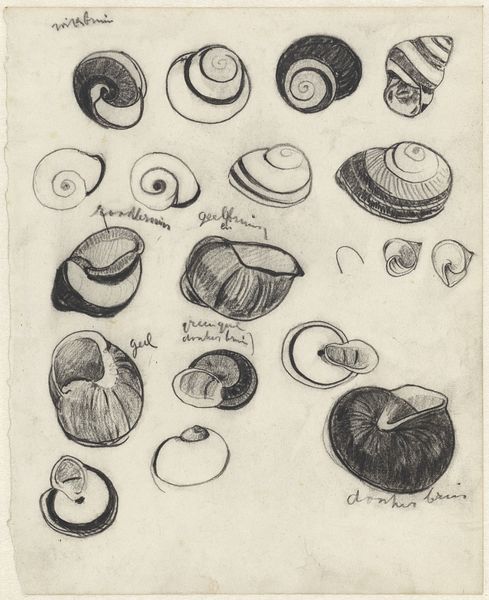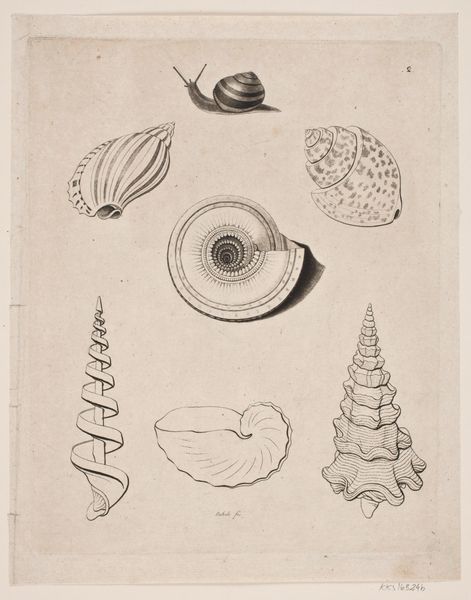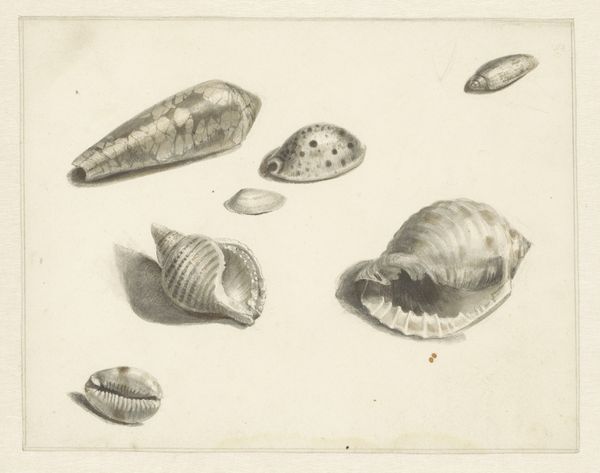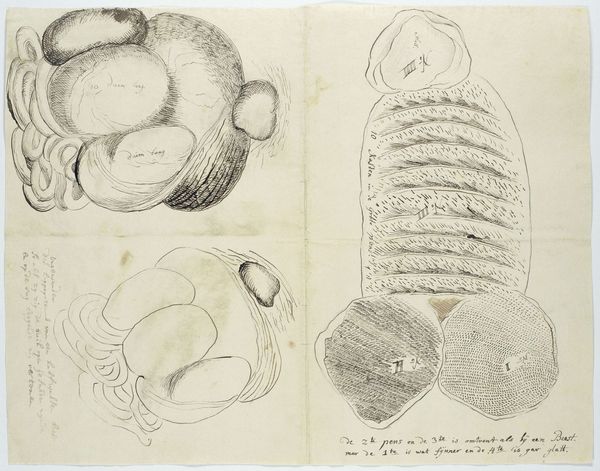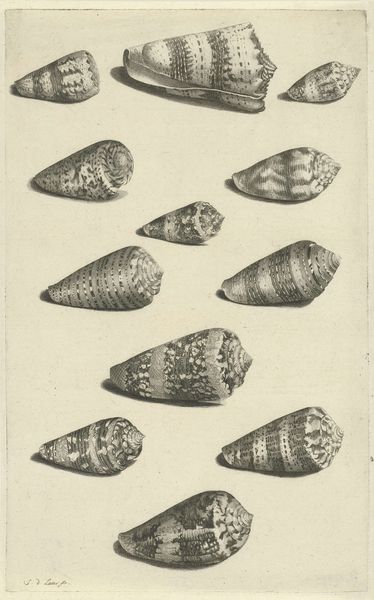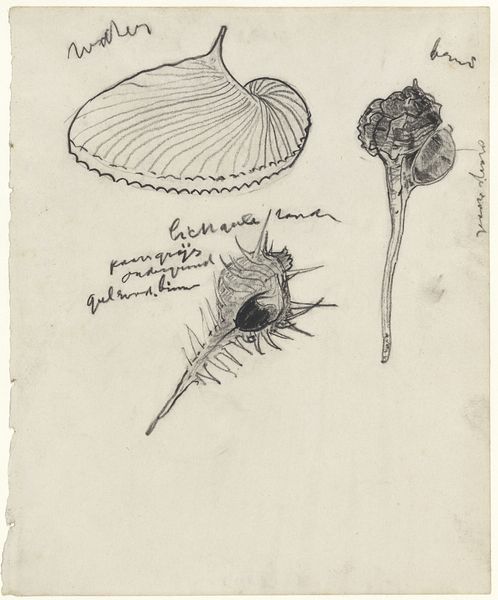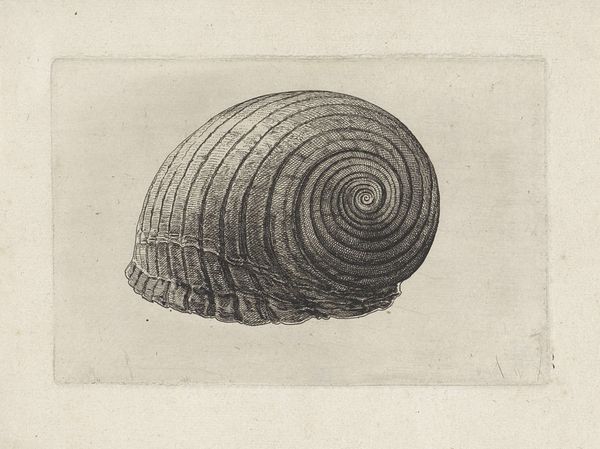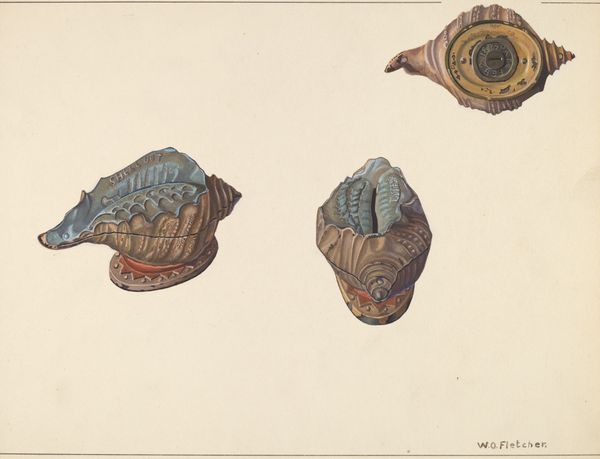
drawing, pencil
#
drawing
#
pen sketch
#
pencil sketch
#
pencil
#
realism
Dimensions: height 204 mm, width 163 mm
Copyright: Rijks Museum: Open Domain
Theo Nieuwenhuis created this study sheet with shells in pen in the late 19th or early 20th century. Here, we see natural forms reduced to their basic shapes. Consider the spiral motif, prominent in several shells. Across cultures, the spiral symbolizes evolution, growth, and the cyclical nature of life. Think of the labyrinth, the winding path of the hero's journey, or the serpent, shedding its skin in an eternal dance of death and rebirth. In the swirling patterns of these shells, one can see echoes of ancient cosmological symbols, linking the microcosm of the shell to the macrocosm of the universe. The shell itself, as a protective enclosure, evokes ideas of safety and retreat. Yet, it also hints at vulnerability, the soft-bodied creature hidden within. This duality engages our subconscious, reminding us of our own transient existence. The image of the shell has resurfaced in various forms throughout history, each time adapted and imbued with new cultural significance, yet always carrying with it echoes of its primal origins.
Comments
No comments
Be the first to comment and join the conversation on the ultimate creative platform.
